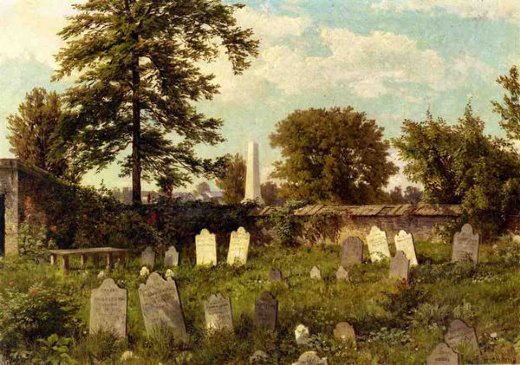 |
| Autochrome by Louis Lumière"Madeleine, Suzanne et Andrée à travers les vignes" |
You can use what we think of as "secondaries,"—orange, green, and violet—as primaries and come up with very interesting color schemes. The Autochrome process, an early form of color photography, did just that.
 |
| Jean-Baptiste Tournassoud ( French, 1866 - 1951); Le Phonographe; Autochrome, circa 1912 courtesy the Photography Museum |
Through a magnifier (below), the individual colored grains are visible (left courtesy PhotographyMuseum.com, right courtesy Univ Delaware).
I'm not sure how accurate the color in these examples are. The first one looks Photoshopped to pump the colors, and the second one looks yellowed. But you get the idea.
Yellows are mixed from orange and green, similar to the way they're mixed from red and green in computer screens and theater lights. Yellows are the hard color to achieve this way, because they come out weak and low value, so they have to be tinted up with white, and at best they'll be sort of beige.
But the experience of building a color scheme where the colors we think of as "primaries" have to be mixed from "secondaries" is a strange exercise that will rewire your color brain.
-----
Resources
Yellows are mixed from orange and green, similar to the way they're mixed from red and green in computer screens and theater lights. Yellows are the hard color to achieve this way, because they come out weak and low value, so they have to be tinted up with white, and at best they'll be sort of beige.
But the experience of building a color scheme where the colors we think of as "primaries" have to be mixed from "secondaries" is a strange exercise that will rewire your color brain.
-----
Resources
Autochrome process on Wikipedia
More about limited palettes in my book, Color and Light: A Guide for the Realist Painter
Previously on this blog: Charting Limited Palettes
Limited Palettes
Experiments with an Ultra-Limited Palette (Catskill Roadhouse) with video
GurneyJourney YouTube channel
My Public Facebook page
GurneyJourney on Pinterest
JamesGurney Art on Instagram
@GurneyJourney on Twitter
More about limited palettes in my book, Color and Light: A Guide for the Realist Painter
Previously on this blog: Charting Limited Palettes
Limited Palettes
Experiments with an Ultra-Limited Palette (Catskill Roadhouse) with video
GurneyJourney YouTube channel
My Public Facebook page
GurneyJourney on Pinterest
JamesGurney Art on Instagram
@GurneyJourney on Twitter



















